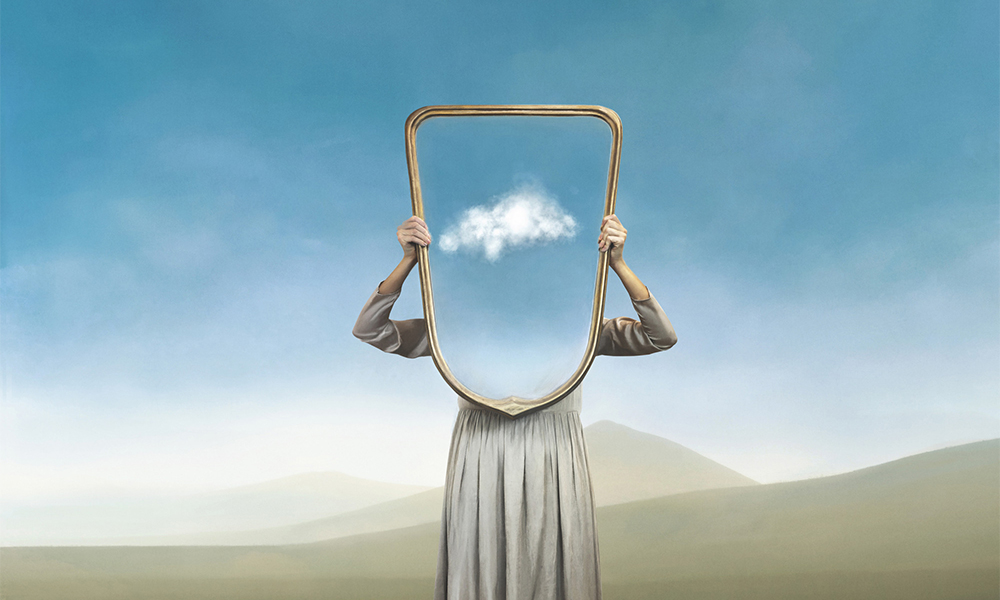Have you ever hit Reply All by mistake, sending out an email to the entire office instead of the one person it was meant for? Or made a silly observation during a meeting or social event? Or realised you had a piece of spinach stuck between your teeth all day? Moments like these make many of us cringe in humiliation, triggering anything from a blush to a rush of excruciating memories for months (or even years!) afterwards.
Believe it or not, awkward moments in life can actually be a good thing – an opportunity for growth, perspective and connection. Journalist Melissa Dahl, who spent two years studying the emotion of awkwardness, presents her surprising findings in Cringeworthy: A Theory of Awkwardness. As a child, Dahl moved with her parents every few years and each transition required her to fit into a new social circle, causing her a great deal of social anxiety. These feelings of self-consciousness and awkwardness continued into adulthood, motivating her to explore them further. During her research, Dahl immersed herself in the science around embarrassment and intentionally placed herself in uncomfortable situations – from talking to strangers on the subway, to reading out her middle school diary in front of an audience. In the process, she learned that awkwardness can be valuable and illuminating, if only people can get past their irrational fear of it.
So, this week, my message focuses on how to reframe and manage awkwardness in a way that allows you to get over the cringe effect and learn some valuable lessons.
Defined by Dahl as self-consciousness with this undercurrent of uncertainty, awkwardness occurs when the self you are presenting to the world clashes with the way the world is seeing you. In other words, there’s a disconnect between who you want to be and how other people perceive you. Psychologist Philippe Rochat calls this “the irreconcilable gap”. A physical quirk that corresponds with this psychological phenomenon is the embarrassing jolt you experience when hearing a recording of your voice. The way you hear your own voice is unique: it sounds lower than it actually is due to the way the frequency travels through your skull bones. So, when you hear your voice the way other people do (more high-pitched), there’s a disconnect – which makes you cringe.
Excessive self-consciousness can hold you back from taking chances and seizing opportunities because you don’t want to stand out or attract comment. It can cause you to relive awkward moments (real or imagined) over and over again.
These fears can also keep you from having uncomfortable but important conversations – whether with your team member, best friend or child – causing unresolved issues to fester.
On the other hand, getting comfortable with awkwardness can be extremely liberating. You become more willing to risk a little humiliation in pursuit of greater goals, such as speaking up in a meeting or striking up a conversation with a stranger. You start putting yourself out there and utilising awkwardness as a means to grow. Being able to deal with embarrassment also makes it easier to have those difficult conversations with co-workers, family and friends.
Here are seven insights to help you embrace awkward moments and turn them into learning opportunities:
1. A shared connection
Over the course of her research, Dahl discovered that her feelings of awkwardness weren’t an exception. Rather, they were the norm. Nearly everyone with some degree of self-awareness cringes now and then at their goof-ups – you’re definitely not the only one! Realising that awkwardness is a universal phenomenon makes it easier to get past your own humiliating moments.
2. Compassionate cringing
Dahl offers the idea of “compassionate cringing”, in which we treat our own and other people’s slip-ups more gently, given that everyone struggles with awkwardness. In an interview with Angela Chen, Dahl elaborates:
[Compassionate cringing] is a really nice feeling. It can help reframe the idea of awkwardness as something that everyone has experienced, so maybe I can choose not to drown in it and I can learn from it. It makes the feeling a little less isolating and is a nice way of connecting with other folks through our mutual human absurdity.
3. Everybody isn’t focused on you
Most of us suffer from the “spotlight effect”, which Dahl sums up as our tendency to overestimate how closely others are noticing what we do or how we look. When something embarrassing happens, you’re convinced that all eyes are on you, whether you said something dumb at a party or entered a meeting late. However, research shows that other people scrutinise our actions much less than we think. Yes, some people are looking at you, but not as intently as you think and not for very long. So, stop stressing about the coffee you spilled in the morning meeting – no-one else even remembers it.
4. Dealing with cringe attacks
If you’ve ever had a horrifying memory burst, putting you right back in the middle of an extremely embarrassing situation, then you’re familiar with “cringe attacks” (as Dahl calls them). Our brains tend to hold on to memories that make the deepest emotional impression, which is why cringe attacks can happen even years after the incident. The good news is that these sudden throwbacks happen to practically everyone and can be managed.
Focusing on the peripheral details of the memory – what, where, who, when – can help to reduce the emotion associated with it. In Awkward! Why social media creates such cringeworthy moments, Gael Fashingbauer Cooper highlights Dahl’s advice to undermine the power of cringe-inducing memories:
Many of us try to force ourselves not to think about our excruciating moments, or to convince ourselves they weren’t really that bad. Bad news: Dahl says neither of those tactics work, and what does help [is] exploring the memory, even if it’s the last thing you want to do…
“Think about the other sensory aspects of it, like, what else did you see, what else did you hear, were there any smells?” Dahl says. “Can you try and put yourself in the shoes of somebody else in the situation?”
5. Signposts for growth
Since awkwardness arises from the gap between your ideal self and the way other people see you, social embarrassment can signal opportunities for personal growth. Picking up on these clues and learning from them allows you to align more closely with the person you want to be. Dahl gives the example of big, sensitive subjects like race and disability, which frequently cause embarrassment even among well-intentioned people. In the interview mentioned above, she explains how to mine this awkwardness for useful information:
It’s worth considering that other person’s perspective and put yourself in their shoes and think, “I don’t know everything, I meant to say it this way and they took it this way and maybe they’re right.” In these moments when we feel so uncomfortable, we can get a little closer to the person we want to be.
6. Exposure therapy
A little awkwardness isn’t going to kill you, and a good way to remind yourself of that is to intentionally place yourself in embarrassing situations. This is exactly what Dahl did- from having an extremely uncomfortable conversation with a friend on the opposite end of the political spectrum, to leading a dance at an improv class. In ‘Cringeworthy’: Author Melissa Dahl Learns To Embrace Her Awkward Moments by Katy Tripses, Dahl sums up the process as follows:
One of the things I came across was exposure therapy, which is a series of small steps towards making you feel more comfortable with something. [In] social mishap exposure, you intentionally set yourself up for embarrassment with the purpose of making yourself a little less sensitive to it. You can look back at doing something kind of crazy and say ‘yes, that was weird but I’m ok, I survived’. And you get used to that feeling. The idea is that if you get used to these weird situations, perhaps you’ll be better at them when you encounter them in real life.
7. Reclaim and reframe
Break the hold awkward moments have over you by learning to laugh at yourself. Own the part of you that slipped up (instead of burying or running away from it) and turn the incident into a funny story. This way, instead of being a private humiliation, it becomes a way for you to connect with other people. Accepting and sharing your awkwardness allows you to become more comfortable with this aspect of yourself.








Comments